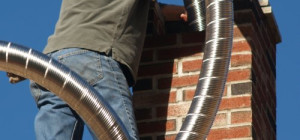 One of the most challenging times in a pig’s life is when it’s weaned. Under-eating, poor nutrition, and digestion problems all come with the territory. Weaning is a major change, not only for piglets, but the sow as well. You must meet the challenges of dietary changes and anxiety. Milk is more digestible and nutrient-rich than even the best of feeds, so the process of weaning piglets should be gradual, with careful attention being paid to changing appetites and nutritional intake. Piglets are prone to disease at four weeks, so absorption and digestion need to be optimal, too.
One of the most challenging times in a pig’s life is when it’s weaned. Under-eating, poor nutrition, and digestion problems all come with the territory. Weaning is a major change, not only for piglets, but the sow as well. You must meet the challenges of dietary changes and anxiety. Milk is more digestible and nutrient-rich than even the best of feeds, so the process of weaning piglets should be gradual, with careful attention being paid to changing appetites and nutritional intake. Piglets are prone to disease at four weeks, so absorption and digestion need to be optimal, too.
The Consequences of Weaning Stress
Piglets experience stress due to the loss of the sow’s protection and the need to mix with piglets from other litters. Adjusting to a solid diet is usually encouraged through creep feeding, a process that allows for both suckling and the consumption of feed. During this phase, stress levels must be monitored. Piglets weaned at three weeks show more signs of anxiety than those weaned at five weeks. Weaning piglets late will improve growth by five to 10 percent and improve mortality rates significantly.
Creep Feeding
Creep feeding is proven to reduce stress and under-eating. The food you choose must contain digestible ingredients that are nutrient-rich. Move slowly, so that when starter feed is introduced, your litter won’t suffer from the dire effects of poor nutrition.
Avoiding Disease
Sickly piglets won’t wean well, so you must make sure your sow enjoys a healthy pregnancy and is well cared for. Keep farrowing rooms clean and prevent E. coli infections. Your housing must be draught-free and at a temperature of about 24 degrees Celsius. Warmth reduces a great deal of health problems, improving immunity while reducing excess energy usage. Litters that are kept together suffer from fewer illnesses and less stress. Social hierarchies will be challenged if you house all your litters together, and this spreads disease and prevents piglets from eating at all.
Teaching Your Litter to Eat
Piglets must be trained to eat. This can be achieved by providing small portions at two weeks and gradually altering feed until an age-appropriate diet has been achieved. Offering calcium-rich feed initially will go far in preventing this because young litters are fond of lactose.
Late Weaning
A late weaning schedule supports an easy production flow. Weaning problems have increased as housing and nutrition has changed, so in many ways, piglets need a little less modernity in their lives. Some farmers prefer to wait until eight weeks of age before they wean. This doesn’t only support piglets better, but your sows as well. You’ll ultimately be left with heavier, calmer hogs and a more attractive bottom line. Your piglets will also present with fewer behavioral problems. Late weaning requires more farrowing room or fewer sows, but this shouldn’t create many challenges beyond the changes you need to make to your schedule.
Using Your Sows for Guidance
When sows are left to guide their own weaning age, they reduce sucklers by 90 percent by 10 weeks, when they begin to spend less time away from their litter. They stay with their piglets overnight and wean later when they have small litters. This provides an excellent guide for creating a creep feeding schedule that encourages natural weaning.
Your goals for your litter will play an important role in your choices. The needs of weaned pigs are different from those of finished ones. If you want to achieve good weights, late weaning achieves it best. The same applies if you want to increase the size of later litters. To make the most of your sows and piglets, you must take of your adult hog. This will increase birth rates, which you can then push up during lactation. The genetics of your hogs and your management strategy also influence weaning age.
Your hogs will rarely cope with as much stress as they do during weaning, and that affects everything from their immune systems to their digestion. Being separated from the sow is difficult enough without the administration of vaccines and new sources of feed at this time in their lives. Even something as simple as good bedding can help to soothe the litter. It’s critical that they receive the same creep feed after weaning as they did before. A little familiarity goes a long way, as does gentle, calm handling by farm workers. Ultimately, thoughtfulness and slow adjustment can make your weaning process more successful.







